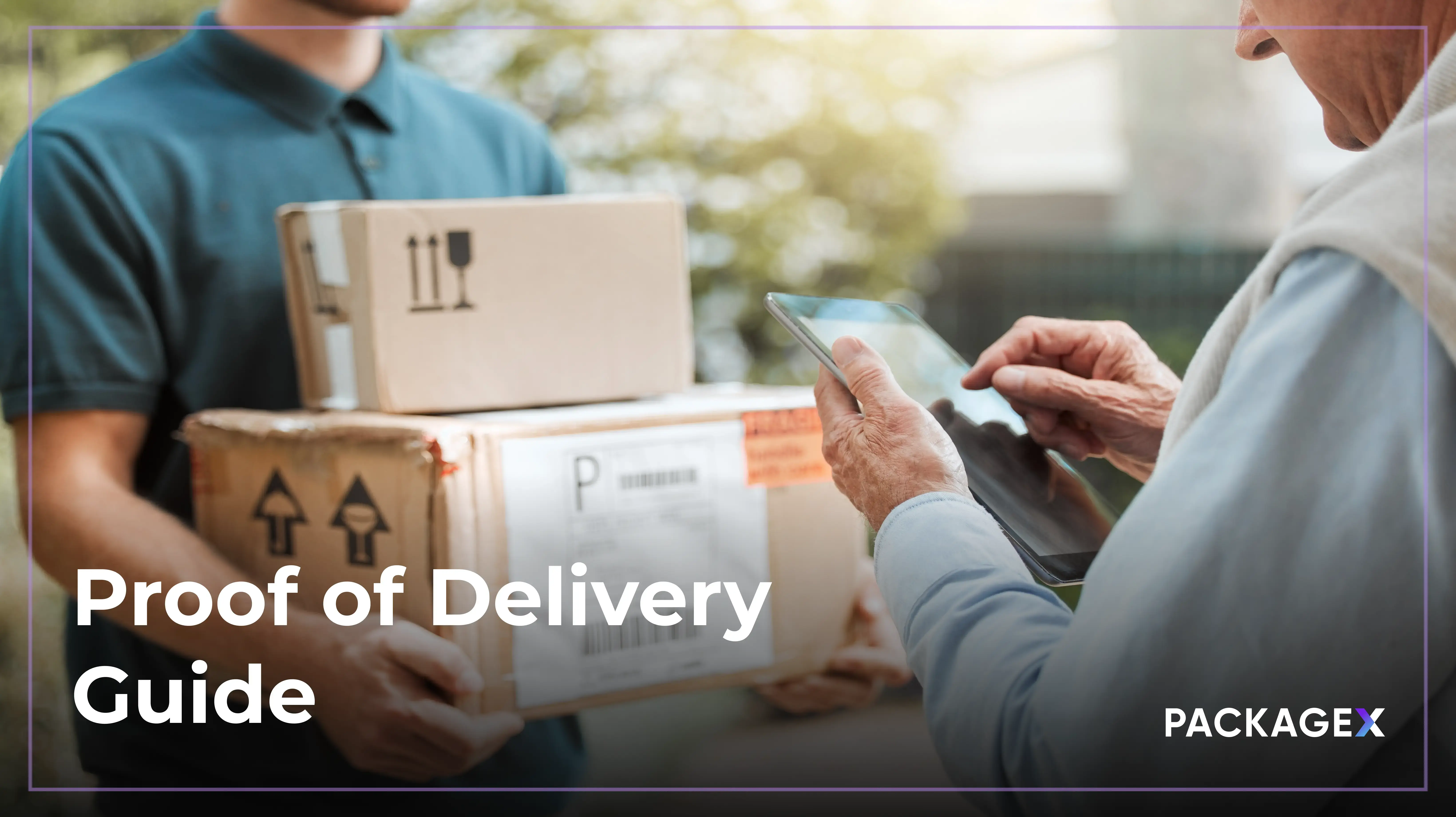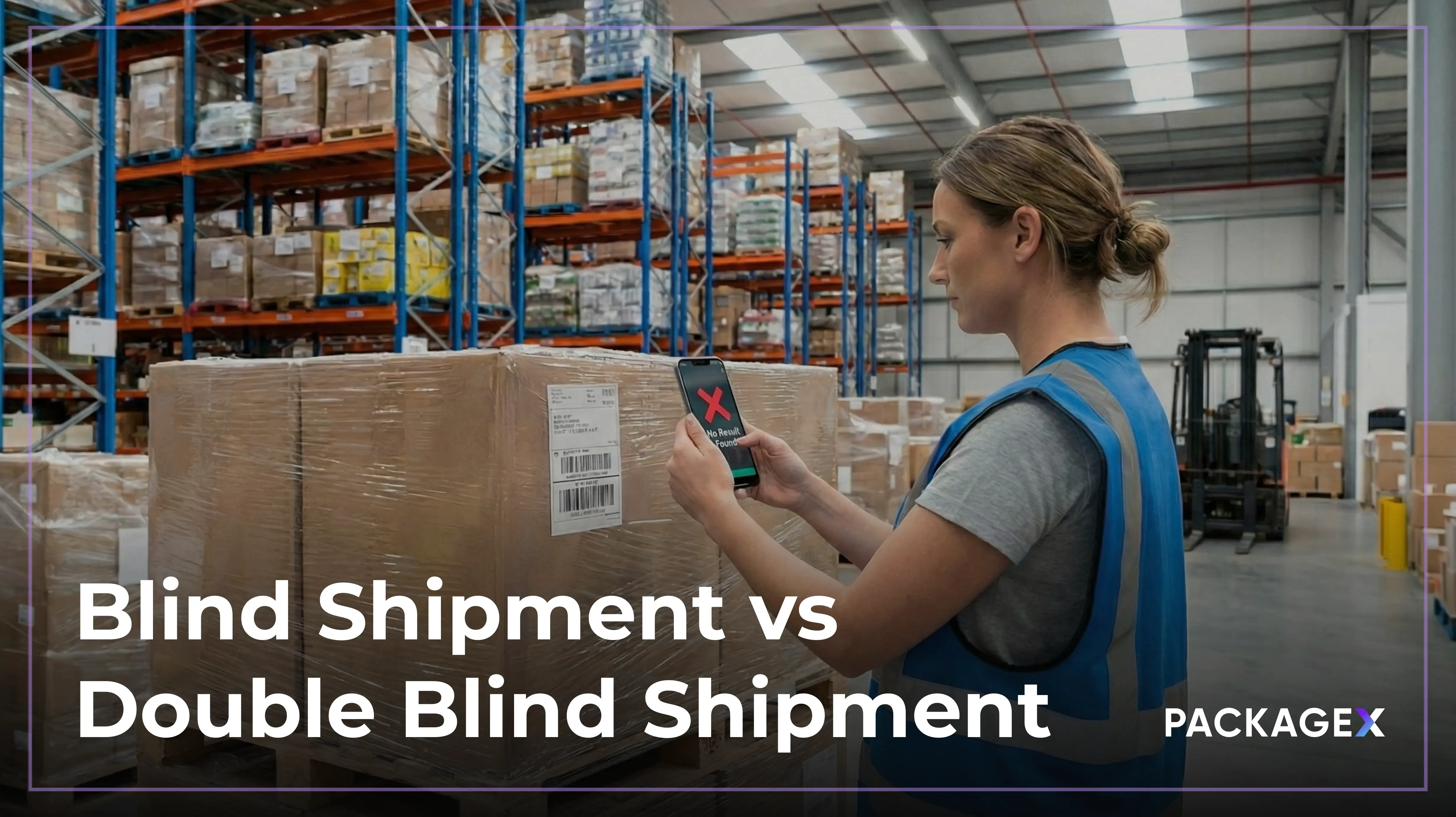Returns are now a routine part of the retail industry. As eCommerce continues to grow, options like "Buy Online, Return in Store" become the norm. Customers are sending back products more than ever.
The global market for reverse logistics is expected to grow significantly, reaching an estimated $1.2 trillion by 2033.
These numbers explain why reverse logistics management has become a key piece of the supply chain.
In this blog, we’ll explore what is reverse logistics, why it matters, and how it helps move goods from customers back to manufacturers.
What Is Reverse Logistics?
The reverse logistics definition refers to the process of moving goods from the customer back to the seller or manufacturer. It includes activities like handling product returns, repairing or refurbishing items, managing excess or outdated inventory, and recycling.
Reverse logistics examples include product returns due to customer dissatisfaction, damaged or defective goods, overstocks, and expired products.
Core Functions of Reverse Logistics
- Managing Product Returns: This involves receiving and sorting returned items due to defects, customer dissatisfaction, or delivery issues. Efficient returns handling is important for effective reverse logistics management.
- Repairing and Refurbishing Products: Returned goods are often repaired, rebuilt, or restored to a sellable condition. This not only saves costs but also supports sustainable logistics services.
- Recycling and Safe Disposal: Items that can't be reused are broken down for recycling or disposed of in compliance with environmental standards.
- Reclaiming Packaging Materials: Reusable packaging includes items like crates, pallets, and containers. These materials are collected, cleaned, and reused to help reduce waste.
- End-of-Life Product Handling: When products reach the end of their lifecycle, they are responsibly recycled or disposed of using eco-friendly reverse logistics solutions.
- Reselling Returned Goods: If a returned product is still functional and undamaged, it can be resold through discounted or secondary channels. This helps recover value and reduce losses.
Reverse Logistics vs. Traditional Logistics
In a traditional supply chain management, products move forward from suppliers to manufacturers, then to distributors, retailers, and finally, customers. The primary goal is to deliver goods efficiently to the end user.
Reverse logistics management works in the opposite direction. It starts with the customer and flows backward through the supply chain. This includes returning items to a store, warehouse, distributor, or even the original manufacturer.
A strong supply chain should support both directions. Products can move back one step or all the way to the source. In retail logistics, returned goods may be inspected, restocked, repaired, or resold at a discount.
To manage this process well, businesses often use reverse logistics software. These tools help track returns, reduce waste, and recover value from returned items. A well-managed reverse flow can lower costs and improve customer satisfaction.
What Are the Types of Reverse Logistics?
The following are different types of reverse logistics.
1. Returns management
It is a fundamental aspect of reverse logistics that deals with product returns from shoppers and includes efficient collection, sorting, and inspection of returned items. An effective returns management system aims to minimize processing time and facilitate seamless return experiences.
2. Return policy and procedure
A well-defined return policy and procedure helps manage shopper expectations, ensuring that returns are handled consistently and in compliance with company policies. Retailers can minimize return-related misunderstandings and disputes by providing transparency and clarity, fostering a positive shopper experience.
3. Remanufacturing
The remanufacturing process involves disassembling, repairing, and reassembling returned items, making them suitable for resale or reuse. Remanufacturing reduces waste and environmental impact and presents cost-saving opportunities for retailers through repurposing returned goods.
4. Packaging management
Proper package management is crucial in reverse logistics to protect and efficiently transport returned items. Retailers should consider sustainable packaging solutions that minimize material waste while ensuring product safety during the return logistics process.
5. Unsold goods
Handling unsold goods involves deciding whether to reintroduce these items into the market, liquidate them through discounts, donate them to charitable organizations, or dispose of them responsibly.
6. Delivery failure
This type of reverse logistics management deals with products that are not delivered to shoppers, returned to fulfillment centers, and shipped back to the manufacturer. However, retailers can manage delivery failures by addressing the issue and resending the item.
7. Rentals
It includes retrieving, inspecting, and refurbishing rental items after shoppers return them. Efficient reverse logistics in this context is critical for maintaining the quality and availability of rental inventory.
8. Repair and maintenance
Reverse logistics also encompasses the process of handling items that require repairs or maintenance. This involves managing the logistics of returning faulty or damaged items, diagnosing the issues, and ensuring timely repairs or replacements to meet customer expectations.
Why Is Reverse Logistics Important?
A well-managed logistics system helps businesses cut costs, retain customers, and operate more sustainably.
1. Cost Reduction
Returns can be expensive to handle, especially for large retailers. With the right reverse logistics platform, companies can automate key tasks like sorting, tracking, and restocking. This reduces manual labor, cuts shipping costs, and streamlines return processing. For those working with third-party providers, 3PL logistics solutions can help scale these savings even further.
2. Sustainability
The rise of the reverse logistics market is closely tied to growing environmental concerns. A smart reverse process allows companies to refurbish, recycle, or repurpose returned goods. This minimizes landfill waste and helps meet corporate sustainability goals. Using eco-friendly practices also appeals to conscious consumers and improves a brand’s long-term image
3. Customer Satisfaction
Shoppers expect quick and easy returns. A smooth return process builds trust and encourages repeat purchases. By using a digital reverse logistics platform, retailers can offer return labels, real-time tracking, and faster refunds, all of which improve the customer experience. This is especially critical in retail logistics, where customer expectations are high.
4. Inventory Management
Returned products, if managed effectively, can be reintroduced into inventory or sold through alternative channels. A reverse logistics system gives businesses visibility into returned stock. This reduces waste, helps in inventory management, and also assists companies in recovering value from returned items
5. Brand Trust
A seamless return process shows customers that a brand cares about service and transparency. When returns are easy, customers are more likely to buy again. Brands that invest in reliable reverse logistics software often see stronger loyalty and positive word-of-mouth.
Benefits of Reverse Logistics
An efficient logistics process offers several key benefits:
- Low Operational Cost: Streamlined returns management reduces transportation, warehousing, and inventory costs. Companies can also recover value from returned goods through resale, refurbishment, or recycling.
- Enhanced Reputation: Offering flexible returns strengthens a company’s image as customer-centric and reliable.
- Risk Mitigation: Proper handling of returned goods helps manage compliance and safety risks.
- Meeting Regulatory Standards: A strong reverse logistics process ensures products that are damaged. They are returned, handled, or disposed of in line with safety laws.
- Gaining Operational Insights: Through reverse logistics software, companies can track why items come back, spot quality issues, and understand customer behavior. These insights help reduce future returns and improve supply chain optimization.
How Does Reverse Logistics Work?
Reverse logistics involves five stages. Here's a breakdown of the typical stages involved:
1. Returns Initiation and Authorization:
The process starts when a customer initiates a return, typically through an online portal or reverse logistics software, which helps verify eligibility and streamline approvals.
2. Collection and Transportation:
Once approved, the product is collected from the customer and shipped back to a designated location. A reverse logistics system helps streamline this movement and reduce transit delays.
3. Sorting and Quality Inspection:
Returned products are sorted based on type and condition. Reverse logistics software assists in tagging, inspecting, and categorizing items for resale, repair, or disposal, enabling faster decisions and fewer manual errors.
4. Repair, Refurbishment, or Repackaging:
Products in usable condition are reconditioned, repaired, or repackaged. Many organizations rely on reverse logistics software to manage refurbishment workflows and track reprocessing stages efficiently.
5. Restocking, Recycling, or Disposal:
Products are either restocked, recycled, or responsibly discarded. Systems help update inventory and ensure compliance.
6. Performance Tracking and Data Analysis:
Advanced logistics software can analyze return trends, identify root causes, and provide insights to optimize return policies, reduce costs, and improve customer experience.
How to Improve Reverse Logistics?
To improve your reverse logistics process, consider these key strategies:
- Implement Clear Return Policies: Ensure your return policies are straightforward, efficient, and fair to customers.
- Include Return Labels: Add return labels to outbound packages to make returns easier for customers.
- Automate Warehouse Operations: Use logistics solutions to automate returns handling. Manual processes increase costs due to labor inefficiencies, while warehouse automation improves accuracy and visibility.
- Use AI for Returns Management: AI scanning can streamline tasks like receiving and inspecting without requiring a full system overhaul. It helps reduce manual errors and boosts operational speed.
- Centralize Returns: Establish uniform guidelines for all returns to standardize processes across different product types.
- Identify Return Causes: Gather customer feedback to understand why products are being returned, then address the root causes to reduce future returns.
The Future of Reverse Logistics
The future of reverse logistics is about removing disruptions from the returns processes. More companies will invest in technology to improve logistics processes, such as automated sorting systems and real-time returned product tracking.
Smart solutions like PackageX’s logistics platform offer the automation, visibility, and speed retailers need to streamline returns and reduce manual inefficiencies.
We may also see more partnerships between retailers and third-party logistics providers to streamline the returns process. Trends and predictions for the future of reverse logistics include an increased focus on sustainability and environmental responsibility.
Additionally, the emergence of new technologies, such as blockchain technology and artificial intelligence, will continue to drive innovation in reverse logistics solutions.
How PackageX Optimizes Reverse Logistics?
Reverse logistics can be complex. Regardless of whether it's managing returns, recycling, or excess inventory, all of these tasks require attention. With PackageX’s logistics solutions, businesses can streamline every step of the process seamlessly. With PackageX’s AI-powered tools and automation, logistics processes become easier.
Here’s how PackageX helps you improve reverse logistics:
- Pick, pack, label, and ship directly from return drop-off points or third-party logistics (3PL) partner warehouses.
- Barcode-based receiving and inspections to speed up returns without manual errors.
- Full visibility across returns workflows to reduce bottlenecks and minimize waste.
- One platform to manage reverse and forward logistics, supporting scalable operations across multiple locations.
Whether you're a retailer or a 3PL provider, PackageX offers powerful reverse logistics solutions that simplify returns, reduce costs, and improve inventory accuracy across your supply chain.
FAQs
What are the major issues in reverse logistics?
Reverse logistics companies face several challenges that can impact efficiency and cost. Common issues include:
- Limited warehouse space
- High costs of damaged returns
- Rising customer expectations
- Return fraud risks
- Complex return flows
How does reverse logistics affect inventory?
A reverse logistics system improves inventory visibility by tracking returned items and reintroducing them through resale or refurbishment. It also reduces shrinkage and enables smarter inventory decisions using real-time data insights.
What is a real-world example of reverse logistics?
A common example is when logistics companies manage phone trade-ins, such as exchanging an iPhone 15 for an iPhone 16. These systems streamline returns, boost customer retention, and optimize asset recovery from returned products.




